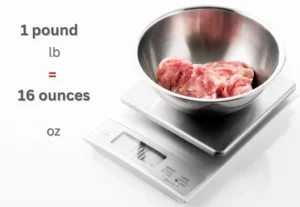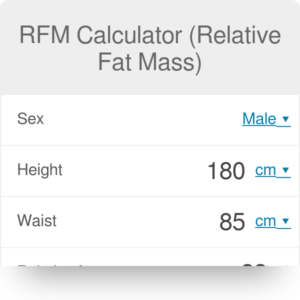This Harris-Benedict calculator (BMR calculator), which uses the Harris-Benedict equation, is the ideal tool for you if you’re concerned about your health and weight. We’ll go through how this basic tool works and how you may utilize it to your advantage in the next post.
What is a BMR calculator?
Your basal metabolic rate (BMR) is the amount of energy (in the form of calories) required for your body to function for 24 hours at rest.
How can you calculate your BMR?
It’s simple to calculate your basal metabolic rate; all you need is your weight and height, however your age and sex also play a role. The following are the calculators for both sexes:
- For men:
BMR = 10 x weight (kg) + 6.25 x height (cm) – 5 x age (years) + 5 - For women:
BMR = 10 x weight (kg) + 6.25 x height (cm) – 5 x age (years) – 161
What is the Harris-Benedict equation?
The Harris-Benedict Equation is a formula that calculates your total daily energy expenditure by taking your BMR and multiplying it by an activity component (calories).
How to determine the Harris-Benedict equation?
Multiply your BMR by the appropriate activity factor to get your total daily calorie requirements:
- Sedentary (little or no exercise):
calories = BMR × 1.2; - Lightly active (light exercise/sports 1-3 days/week):
calories = BMR × 1.375; - Moderately active (moderate exercise/sports 3-5 days/week):
calories = BMR × 1.55; - Very active (hard exercise/sports 6-7 days a week):
calories = BMR × 1.725; and - If you are extra active (very hard exercise/sports & a physical job):
calories = BMR × 1.9.
Check out the Mifflin St Jeor equation and the Katch-McArdle formula for further information about BMR.
It will be simpler for you to stay healthy if you eat a nutritious diet and use the Harris-Benedict calculator to track your BMR. You may use the Harris-Benedict calculator and equation to determine the ideal quantity of calories (or maintenance calories) to consume if you wish to maintain your current body weight.
If you want to gain or lose weight, you may use this figure as a starting point for eating more or less. Remember to get medical advice if you want to gain or lose a significant amount of weight.
FAQ
How do I calculate my BMR?
To calculate your BMR, you would usually use the Harris-Benedict equation:
- For women, it’s:
BMR = 10 × weight (kg) + 6.25 × height (cm) – 5 × age (years) – 161. - For men, the formula is:
BMR = 10 × weight (kg) + 6.25 × height (cm) – 5 × age (years) + 5.
What is BMR?
Your basal metabolic rate (BMR) is the amount of energy (in calories) that your body requires to function for 24 hours at rest.
What does BMR mean?
The abbreviation BMR stands for basal metabolic rate. It’s the bare minimum of calories your body need to perform basic processes like breathing, eating, and maintaining a constant body temperature throughout the day.
What is a good BMR?
The average BMR is about 1409 kcal (5900 kJ) for a woman and about 1696 kcal (7100 kJ) for a man.
How do I increase my BMR?
To increase your BMR (basal metabolic rate), you can try:
- Eating more protein in every meal.
- Doing more HIIT (high-intensity interval training) workouts.
- Increasing your daily activity – choose stairs over the elevator, walk more, switch to a standing desk.
- Eating more spicy foods.
- Doing more resistance workouts – muscles burn more calories than fat tissue.
How do I calculate BMR in pounds?
To calculate your basal metabolic rate in imperial units, use the equations:
- For men:
66.47 + (6.24 × weight in pounds) + (12.7 × height in inches) − (6.755 × age in years). - For women:
BMR = 655.1 + (4.35 × weight in pounds) + (4.7 × height in inches) − (4.7 × age in years).
How do I use BMR to lose weight?
If you want to reduce weight, counting your BMR is a smart place to start. To begin with, it informs you of the number of calories your body need to function effectively, therefore you should never consume less than that. Then multiply it by your physical activity level (PAL) to find out how many calories you burn on a daily basis. You can lose weight gradually and steadily by subtracting a fair quantity of calories (e.g., 500 kcal/day).
What is the Harris-Benedict equation?
The Harris-Benedict equation is a mathematical method for calculating your BMR (basal metabolic rate). Your age, weight, and height are required. For males and women, there are two different formulas:
- For women –
BMR = 10 × weight (kg) + 6.25 × height (cm) – 5 × age (years) – 161. - For men –
BMR = 10 × weight (kg) + 6.25 × height (cm) – 5 × age (years) + 5.
Is the Harris-Benedict equation accurate?
Of all the BMR equations, the Harris-Benedict equation is regarded to be the most accurate. However, keep in mind that using a calculator to calculate your BMR is simply an approximate estimate and may differ from your real biological demands.
You’ll have to put it into practice, but calculating your BMR is a good place to start.
check our other calculator:


